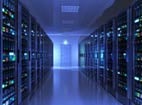Hindsight is often 20/20, but sometimes foresight can be illuminating, too.
Gartner caused a mini-stir this week when it issued its latest prediction for data center spending in the coming years. Despite the rebounding economy and the drive to build out cloud infrastructure, the group is actually dialing back the rate of growth by a rather hefty margin. Rather than the 3.2 percent growth that the company anticipated earlier in the year, the forecast is now set at 2.1 percent, which translates to about $3.75 trillion.
Of course, this is still a significant wad of cash, representing the sum total of all data-related spending across the globe, ranging from devices and data center systems to software solutions, telecom and the wealth of new services that are hitting the market at a steady clip. For IT’s part, Gartner is expecting a still respectable 3.7 percent climb into 2015, representing about $3.9 billion in revenues.
In the enterprise these days, however, it’s not so much quantity that counts, but quality. And the fact is that many organizations are quickly shifting their hardware and platform spends from old-line data center infrastructure to newer modular solutions that are more scalable and can be more readily adapted to the dynamic nature of mobile- and cloud-driven applications.
IDC reports that integrated infrastructure and platforms made up more than 650 petabytes of new capacity in the first quarter this year alone, which would give the sector a 72.3 percent growth rate compared to the same period in 2013. Revenues from these deployments were close to $2 billion, driven largely by the $1.2 billion spent on integrated infrastructure.
And while it looked like much of the new data infrastructure would come from new businesses looking to gain an edge on established competitors by not burdening themselves with costly data centers, it seems that the old guard has something to say about that. Gigaom Research’s most recent survey showed that existing firms are more than willing to reinvent themselves for the new reality. For example, 60 percent of IT executives at established companies say they use SaaS regularly, while over a third are already up and running with IaaS platforms. Future trends suggest that more than 40 percent will be on board with both PaaS and DBaaS within two years.
Clearly, we are at a watershed moment when it comes to data infrastructure. Nearly everyone can sense that change is afoot, although it is not always easy to predict exactly what the next big revolution will be.
Converged infrastructure, the cloud, mobile communications and Big Data are all poised to remake the data environment as we know it, but there is still no clear consensus as to how all this will affect the traditional data center. And perhaps that’s the point: Rather than look for the one right answer, the enterprise needs to craft its own data solutions out of the many right answers that are presenting themselves almost daily.
But be careful: There is just as much danger in having too many choices as in having too few.



